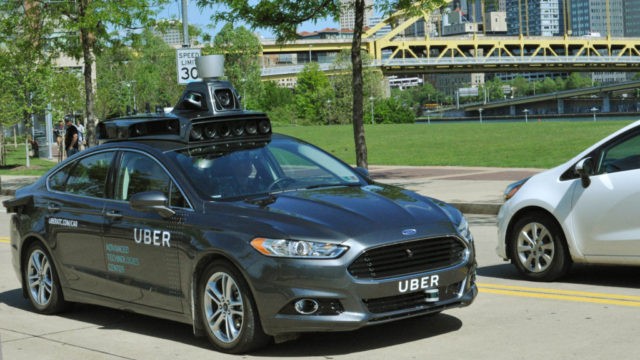The California Department of Motor Vehicles just gave notice that it is moving to allow commercial operation of self-driving test vehicles that operate without stand-by drivers at the wheel.
Senate Bill 1298, which passed in 2012, authorized the California DMV to begin adopting the regulatory authority to approve the operation of autonomous (better known as self-driving) vehicles on California roads.
The DMV issued preliminary regulations in 2014, and is currently allowing 28 manufactures to test self-driving cars on public roads and thoroughfares, as long as there is a stand-by driver behind the wheel to respond to any emergency that might arise.
The March 10 move by the DMV represents an acceleration of the time-to-market for the auto manufacturers and Silicon Valley entrepreneurs that hope to dominate the autonomous vehicle market in California, where there are 25.9 million licensed drivers and 34.3 million legally operating vehicles. The DMV release states that “autonomous technology has proceeded to the point where manufacturers have developed systems that are capable of operating without the presence of a driver inside the vehicle.”
According to Boston Consulting Group (BCG), the annual worldwide market for partially and fully-autonomous vehicles will be 12 million units, at a value of $42 billion, by 2025. By 2035, sales are expected to top 18 million vehicles at a value of $77 billion.
BCG suggests that the first generation of commercially operated autonomous vehicles will be robo-taxis that provide first-and-last-mile connectivity to main public-transportation nodes in cities such as Los Angeles, New York, London, Paris and Shanghai. These vehicles will charge small fees and will likely be owned and operated by mobility providers such as taxi service operators, ride-sharing services and new technology sector entrants.
But as the service becomes more widely accepted, motor vehicle original equipment manufacturers (OEM) will begin renting directly to commuters by the minute or the mile for door-to-door transportation services that will allow passengers to work or be entertained during the trip.
BCG estimates that in New York, for example, the cost of conveying one passenger one mile by robo-taxi would be 35 percent less than conventional taxi or Uber ride.
Robo-taxis will become hyper-competitive by offering separate, private compartments for passengers going in the same direction. BCG calculates that commuter train services seem doomed, because robo-taxis at a shared occupancy of 2 passengers will be cheaper than the full cost of carrying passengers on government subsidized public transit.
Robo-taxi automation technology that includes vehicle-to-vehicle communication and route optimization will dramatically increase vehicle flows on public roads. Depending on annual driving mileage and car occupancy, all but very rural commuters could find robo-taxis more economical than owning and operating a private vehicle.
The BCG predicts that adoption of robo-taxis will result in a marked reduction in the total number of cars on the road within cities, ease traffic congestion, and improve urban land use as parking infrastructure is repurposed for more lucrative activity.
The announcement by the California DMV that it is amending the self-driving regulatory structure to allow full autonomous testing without a standby driver initiates a 120 comment period for interested parties to provide input or contest the move.
Most of the opposition to self-driving vehicle testing has come from cities that are furious about Uber undermining the huge medallion revenue they once collected to approve the number of taxis. But the future looks challenging for Uber, because the players that will dominate robo-taxis are giant multi-national companies that want to own and operate massive pools of autonomous vehicles.

COMMENTS
Please let us know if you're having issues with commenting.